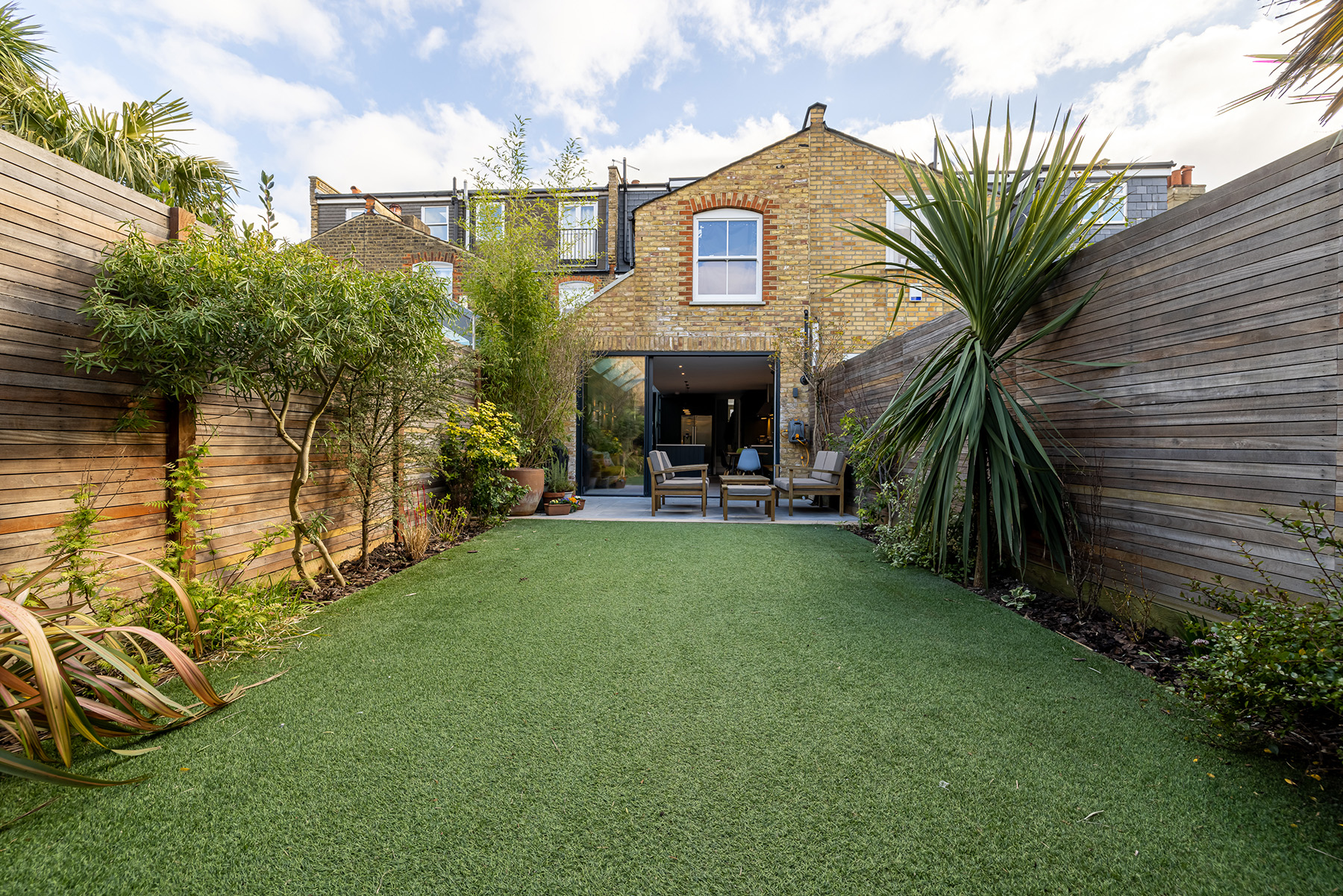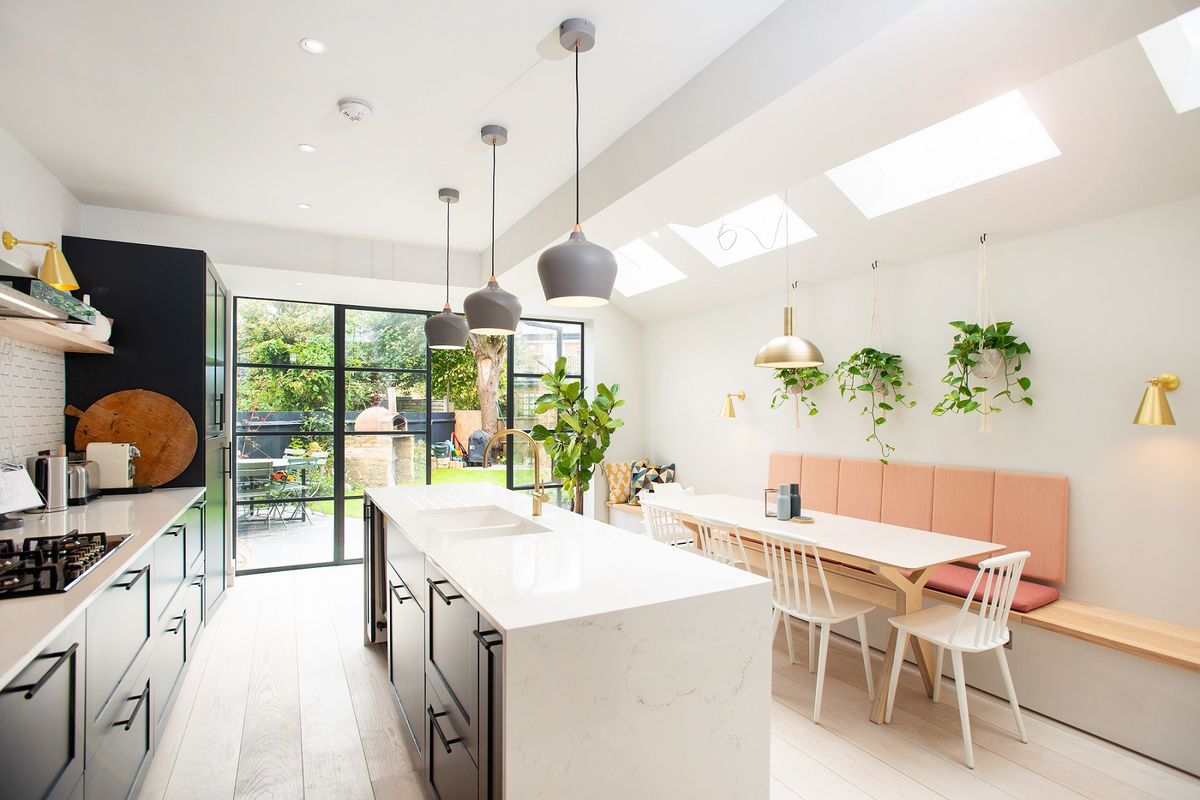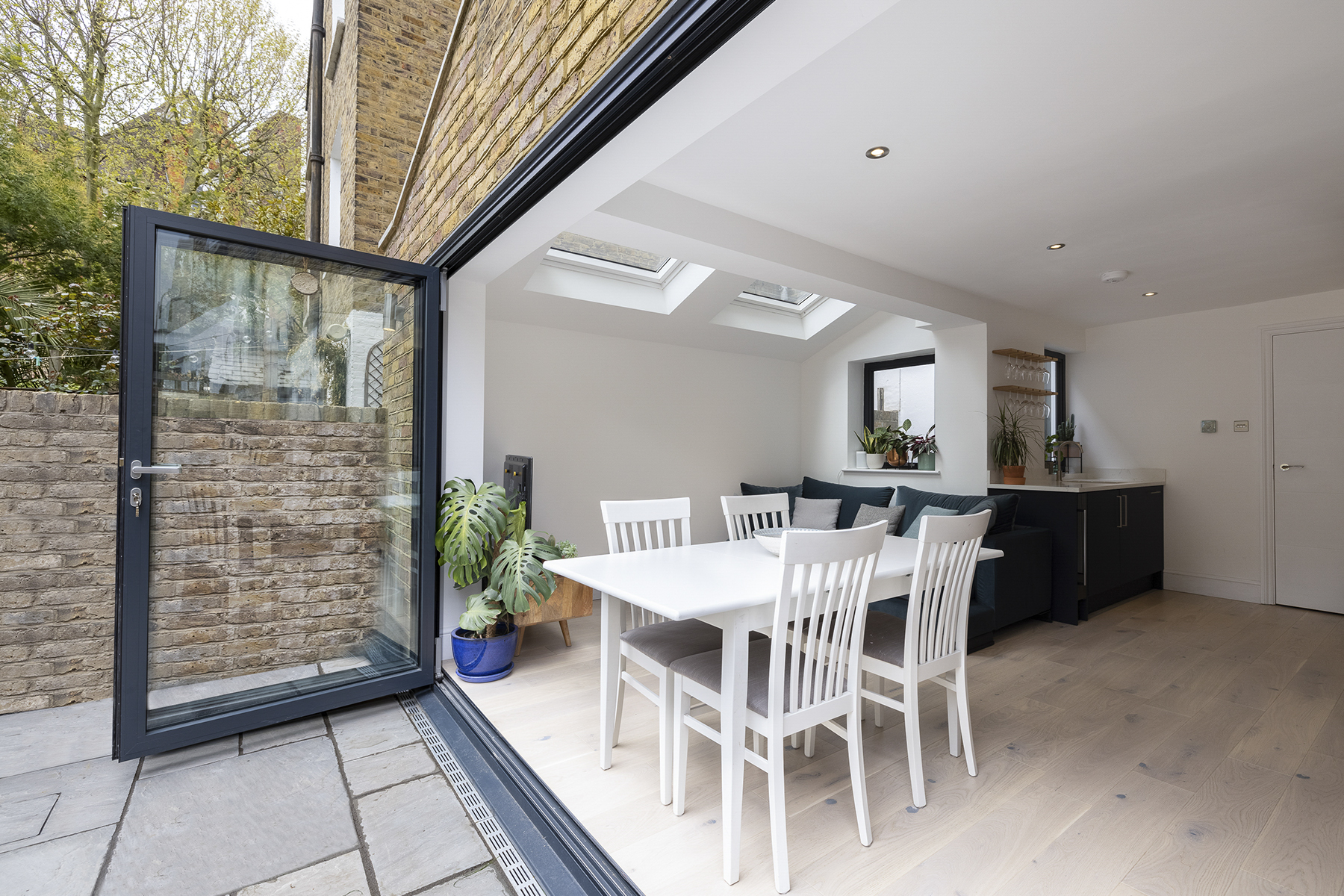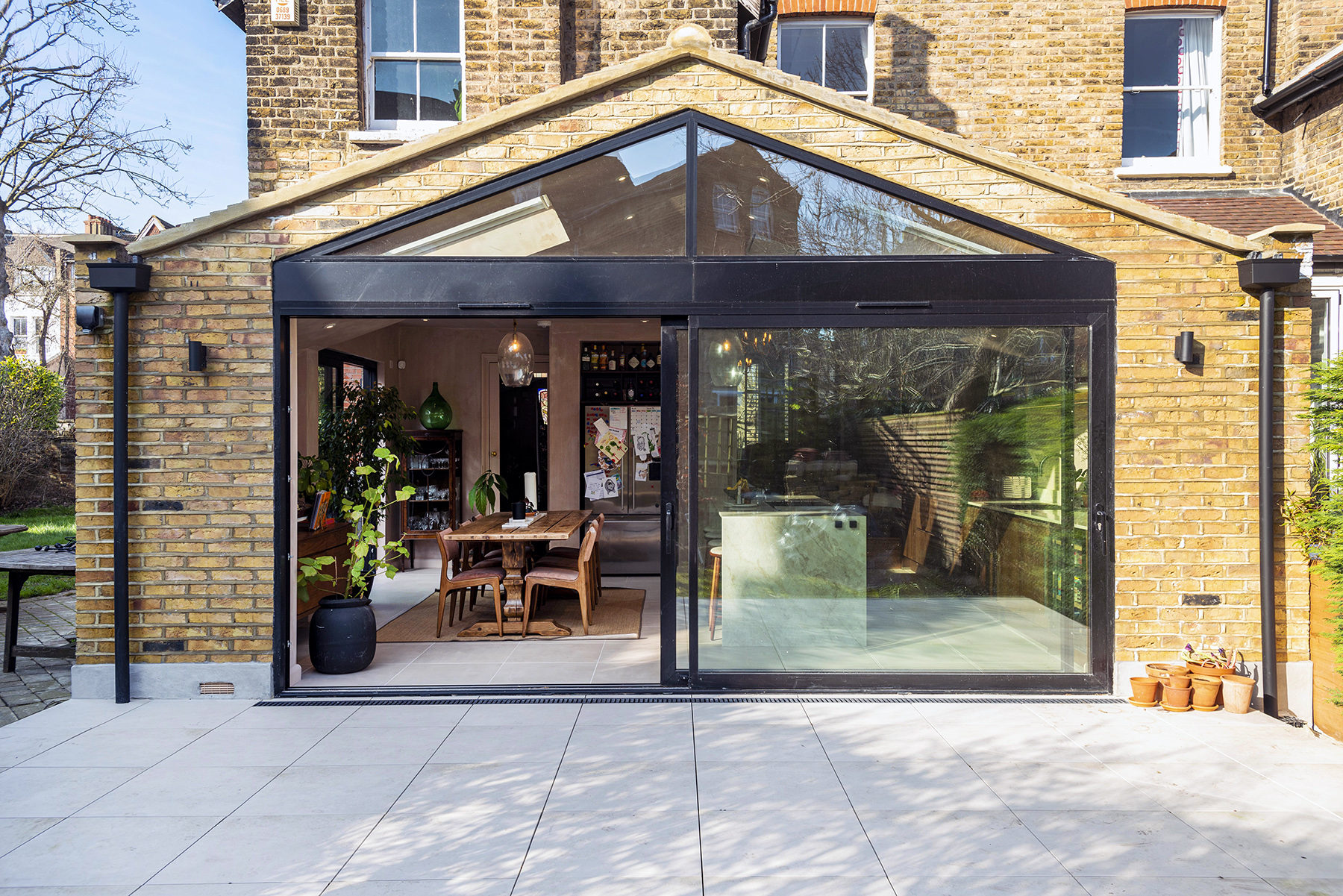Blending Past & Present: Victorian Extension Tips
- 15-05-24
- 5 min read
- Blog
Extending a Victorian home offers an exciting opportunity to blend historic elegance with modern design.
The charm of Victorian architecture, characterised by ornate detailing and sturdy craftsmanship, can be beautifully complemented by contemporary additions. This isn’t about ripping out the old soul of the property but complementing it with tasteful extensions.
Moreover, while Victorian homes have a certain heritage to them, London, Manchester and other cities have developed around them, often blocking out natural light. These kinds of issues can be rectified with extension projects.
Here are some essential tips for homeowners looking to make this blend a seamless reality.
Understanding and respecting the original architectural style of your Victorian home is essential when planning an extension.
Victorian architecture is known for its detailing, high ceilings, and robust masonry. Here's how to preserve these elements:
Echoing Original Features: Look at key features like ornate cornicing, ceiling roses, and sash windows. Replicate these in your extension to create a sense of continuity. For example, if you're adding new windows, ensure they match the style of the original sash windows.
Preservation Techniques: It’s vital to use restoration techniques for any original features that are being retained. This might involve specialist craftspeople who can repair and restore period features like stained glass or intricate woodwork.
Documentation and Research: Research the period of your home and consult with historical societies or local councils for guidance on maintaining its character. Keep a record of all original features and use these as a reference during the design process.
Working with experienced designers and builders will help you maintain the heritage of your home.
This isn’t just an academic exercise – many of these properties are protected by planning laws, and you don’t have completely free reign over how you alter the property.
This is the case regardless of whether or not you need Planning Permission.
Selecting the right materials is crucial for ensuring your extension complements the existing structure while introducing modern elements:
Matching Exterior Materials: Use bricks that match the existing ones in colour and texture for a seamless look. If the original bricks are no longer available, consider using reclaimed bricks from the same era.
Introducing Modern Elements: Glass is an excellent material for modern extensions, contrasting traditional masonry. Consider large glass panels or bi-folding doors connecting the interior with the garden, providing a modern twist that respects the original architecture.
Texture and Finish: Pay attention to the finish of materials. For instance, if introducing metal elements, choose finishes that complement or tastefully contrast with existing materials like brick or stone.
Again, matching materials with the original might be required by planning laws.

Above: Design Team extension in SW12.
Colour is a powerful tool in blending the old with the new:
Historical Colour Schemes: Consider deep, rich tones combined with white and cream for interior decor. Find ways to incorporate these colours subtly in your extension, perhaps on accent walls or through accessories. Of course, though, feel free to take the interior in whatever direction you like – there are no hard and fast rules!
Modern Accents: Use contemporary colours to add a fresh dimension to the space. This could be through modern furnishings, art pieces, or even a feature wall.
Consistency and Flow: Ensure there is a colour flow between the old and new parts of the house. This can be achieved by carrying a particular colour or range of colours throughout the spaces to create a cohesive feel.
Transforming a Victorian layout into a modern living space requires thoughtful planning:
Open-Plan Configuration: Open-plan designs can make Victorian homes feel more spacious and adaptable. Consider removing non-load-bearing walls to create larger, multifunctional spaces. This is particularly effective in the kitchen and dining areas.
Modern Fixtures and Fittings: Contemporary fixtures can be combined with period features in areas like the kitchen and bathroom. For example, a modern, minimalist kitchen can be designed with a classic Aga cooker or a sleek bathroom can feature a traditional claw-foot bathtub.
Balancing Old and New: The key is to balance contemporary design elements with the Victorian character. This can be done through furniture choices, layout, and even the style of lighting fixtures. For instance, a modern chandelier can look stunning in a room with traditional Victorian cornices.
Blending Victorian properties with provocative interior design styles is an excellent choice. You don’t need to get bogged down in convention here, so research your favourite styles, from minimalist to Scandi and see how they can fit your property.
Victorian homes, with their smaller windows, often struggle with natural light.
Addressing this in your extension is vital:
Large Windows and Glass Doors: Incorporate large, floor-to-ceiling windows or sliding glass doors. This allows more natural light to flood in and visually connects the interior with the garden or outdoor space.
Skylights and Rooflights: Installing skylights or roof lights, especially in loft conversions or flat-roof extensions, can dramatically change the ambience of a room, making it brighter and more inviting.
Strategic Placement: Consider the placement of windows and glass features carefully to maximise sunlight throughout the day. South-facing aspects will benefit from the most light but don't overlook opportunities for east or west-facing windows to capture morning or evening light.
Natural light is hugely important in any extension, but some Victorian properties can be fairly dark, which makes it even more important. Skylights, rooflights, etc, are a stunning addition to a property that really opens up the interior.

Above: Wonderfully bright extension in N4 from Design Team.
Creating a seamless transition from your home to the garden enhances the living experience:
Complementary Design: Ensure the exterior of your extension complements the existing structure. This might mean using similar brickwork, roof tiles, or architectural details.
Bifold Doors: Bifold doors provide a superb connection between the interior and outside of a home while completely maximising natural light. They’re pricey but an investment and can seriously change the dynamics of your home.
Indoor-Outdoor Flow: Use similar flooring materials for both the inside and the patio or decking area to enhance the sense of continuity. Bifold or sliding doors can open up entirely, effectively merging the indoor and outdoor spaces.
Combining bifold or wide sliding doors with skylights or rooflights is a superb combination that is certain to flood your home with natural light. The impact can be massive.

Above: Bringing the outside in.
The interior design of your extension is a chance to blend different time periods. Of course, this has to be tasteful and mindful of the original property.
Eclectic Furniture Mix: Combine antique Victorian furniture with sleek, contemporary pieces. This creates a dynamic interior reflecting the home's history and modern living.
Art as a Bridge: Use artwork to connect the old and new. Contemporary art pieces can add a burst of modern style against the backdrop of Victorian architecture.
Accessorising Thoughtfully: Choose modern and period accessories judiciously. For instance, a mix of traditional and modern light fixtures can work together to enhance the overall aesthetic.
Paying homage to the craftsmanship typical of Victorian homes is important:
Bespoke Joinery and Moldings: Custom-designed woodwork, such as built-in bookcases or panelling, can mirror the Victorian era's attention to detail while providing modern functionality.
Attention to Staircases: Victorian homes often feature ornate staircases. Consider a staircase design that matches or complements the existing style and materials in your extension.
Preserving Original Craftsmanship: Wherever original features exist, such as cornices or fireplaces, work to preserve and integrate them into the new design. This might involve restoring damaged pieces or using them to inspire new additions.
Victorian extensions prioritising quality of finishes and craftsmanship stand the best chance of complimenting the original fabric of the building and interior.
Enhancing any historical home involves a harmonious blend of tradition and modernity. It's about honouring the architectural legacy while integrating contemporary elements for functionality and style.
The key lies in striking the right balance, ensuring the home's historical charm is preserved while accommodating modern living needs. This results in a space that respects its origins and evolves to tell a timeless story.
Design Team is adept at working with Victorian homes to design stunning, compliant extensions.
We understand the ins and outs of local planning laws and the unique features of Victorian properties. Contact us today to find out more.
Book a free Design Consultation with one of our team to discuss your project in more detail.
.jpg)
11-11-24 6

10-11-24 6

25-10-24 6